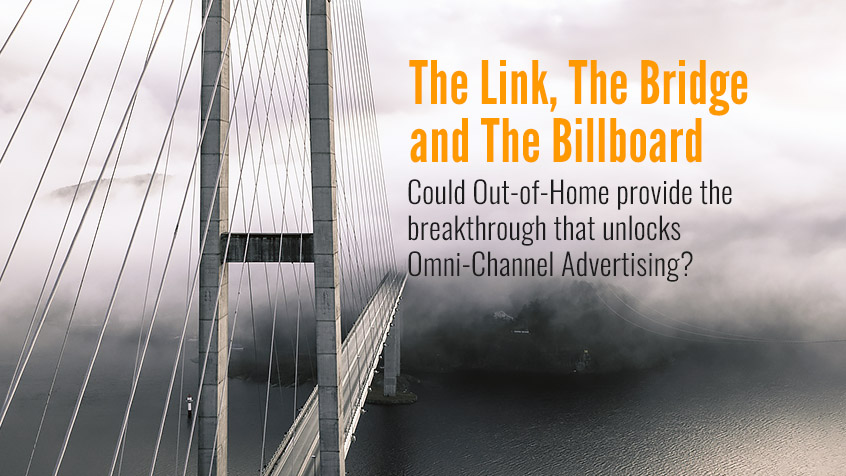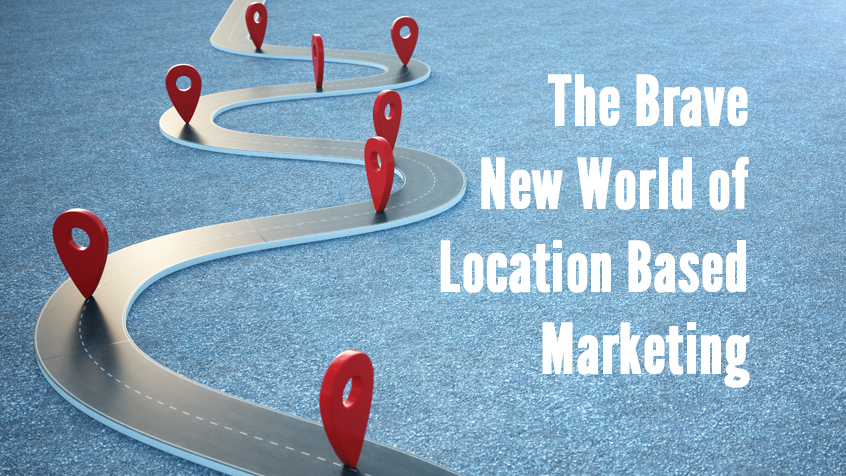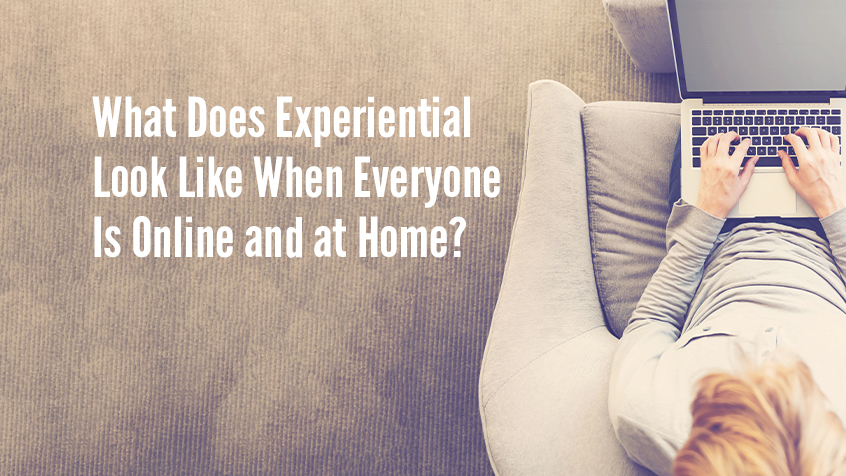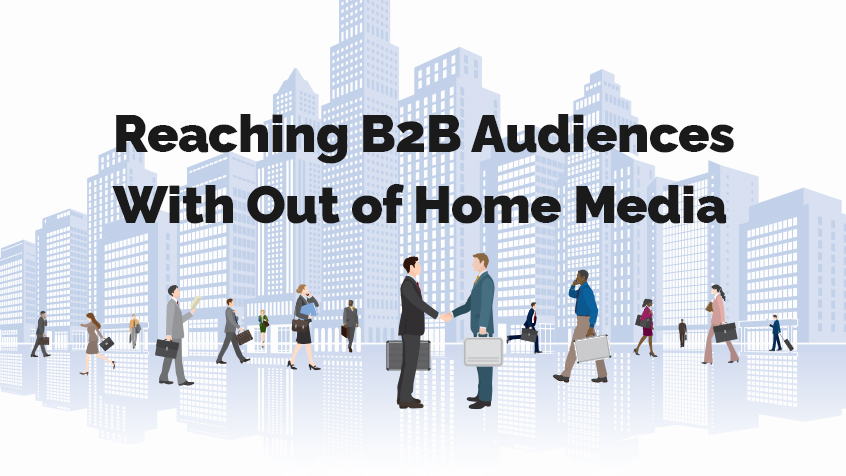In the C.S. Lewis classic “The Lion, The Witch and the Wardrobe” young Lucy Pevensie steps through a magical wardrobe into a fantastic world of talking animals, ice queens and “deep magic”. The wardrobe is her gateway between the physical and magical world. Like Lewis’s wardrobe, Out of Home could be the physical link that allows marketers to unlock the seemingly magical world of true omni-channel advertising – ushering in a new paradigm that thaws our frozen media silos, and allows for a new world of truly customer centric marketing.
Omni-what-now?
Once the iPhone was introduced, suddenly we were carrying personal computers around in our pockets, and marketers quickly realized that there was a huge opportunity just over the horizon. Being able to market to a consumer not just on their computer, but now on their phone…then their tablet (…then their watch?… their glasses?…) could create a unified customer journey that was integrated and seamless across all their devices. As early as 2010, marketers were beginning to talk about an “omni-channel” solution that would bring together various media channels across multiple devices.
Since then the idea of omni-channel has become something of a Holy Grail. A quest that marketers are pursuing that will lead to a grand unification theory of advertising. “Cross-device audience ID matching will be used in 58% of total UK online ad spend by 2020, compared with 28% in 2016, according to new research.” (People, not devices: Audience buying in a Cross-Device WorldEnders Analysis, 2017)
But it’s important to remember through all this talk of devices and datasets that, at its core, the idea of omni-channel is customer centric – it’s about targeting people – phones or pc’s. Therefore, it’s imperative that we look beyond just the devices, to the behaviors of the people who are using them. And where do most of these behaviors take place? Outside the home…
The Link: OOH Drives online engagement
It’s becoming increasingly evident that Out of Home and digital media channels are closely linked. In two recent studies from Nielsen and Benchmarketing (that we discussed in more detail here) it was clearly shown that Out of Home drives online activation at a rate that dramatically over-indexes for its proportion of the media budget. And including Out of Home can improve the effect of online campaigns – especially search – by almost 50%. Another study showed that consumers were 48% more likely to click on a mobile ad after they have been exposed to the brand on Out of Home (NeuroInsight: Beyond OOH, 2015).
But, despite this information studies have shown that advertisers are reluctant to tap into the ability of OOH to drive online engagement. A recent report by the Winterberry Group (From Theory to Practice: A Roadmap to “Omnichannel” Activation) determined that when it came to acquiring local customers, 77% of the panelists chose search over other channels. But when asked which media are “best suited to drive value in concert with the deployment of other channels?”, only 5% of panelists said Out of Home.
So, we now know that OOH drives consumers to engage online – but how can that help pull together digital media channels? What can OOH do to get marketers closer to a true omni-channel solution?
The Bridge: Including Out of Home can improve the accuracy of audience ID’s
The first (and biggest) step in developing an omni-channel experience is identifying the audience. It’s also the biggest challenge. It’s relatively easy for advertisers to employ a wide array of media channels – but the biggest challenge for omni-channel is to consistently identify their audience across devices, channels and touchpoints.
Right now, much of omni-channel relies on probabilistic targeting – surmising that a consumer is probably part of your audience, and that devices are probably related. But when it can move to Deterministic targeting – knowing that users and devices are related – the advertising becomes more highly targeted, more efficient, and more cost effective.
A recent report by the Winterberry Group (From Theory to Practice: A Roadmap to “Omnichannel” Activation) says:
“Persistent recognition of customers and prospects across a range of touch points represents the most fundamental element of true omnichannel marketing—and a business priority of rapidly growing importance….
In significant numbers, marketers are focusing on recognition as a critical first step to personalizing brand interactions across media channels. Nearly three-quarters (72.4 percent) of survey panelists, in fact, indicated that their organizations are actively pursuing cross-channel audience recognition as a key business priority.”
To truly know who you’re targeting, advertisers must be able to determine a specific match between the individual user and the device.
The “a-ha” moment comes when we realize that Out of Home can add another point in the process of identifying a specific audience. The location data that can be derived from OOH placement/exposure becomes another point to triangulate on the target consumer. It joins the data derived from devices (digital signatures/behaviors/etc) and uses their real world behavior to better inform their digital footprint.
With the rise of big data, and the current growth in the ability of OOH to measure and target, Out of Home campaigns can now be planned with much higher levels of accuracy, targeting very specific audience segments, based on home locations and behaviors and movements within the market. This allows marketers to begin with a more accurate view of their audience.
By deploying those Out of Home campaigns with geofencing, marketers can begin to cross reference their probabilistic digital audiences with those who have seen their OOH campaigns. It allows advertisers to tag those audiences for future remarketing, integrating those devices ID’s into their targeting model and making their audience identification more accurate.
Mobile sourced, geographic targeting segmentation is still in it’s infancy, and will only become more accurate, more powerful, faster, etc. As advertisers integrate Out of Home into their omni-channel plans, the more OOH media will help provide better datasets – developing a feedback loop that will ultimately help the other ad channels by creating more targeted audiences – while simultaneously improving the capabilities of the targeting itself.
The Billboard: OOH can provide an entry point for digital channels, and a data point for future engagement
In Lewis’s novel, the children enter the magical realm of Narnia through the simple mechanism of a physical wardrobe – a dusty old-fashioned closet that is left, apparently forgotten, in an unused room. The door is their gateway and is essential for them to transition between the physical world and the fantastic one.
Out of Home represents the same link in the omni-channel advertising paradigm – a real world location, that can unlock a gateway to another world – in this case, the digital one. The beauty for OOH is that geofencing is just one method to get consumers into the digital world. Other opportunities like NFC, interactive digital displays, and even the lowly QR code (which may have just been ahead of its time) mean that not only can OOH provide a link to the digital experience, it can provide different options – combined with different media – at different points in the customer journey.
And that is only taking into account traditional, place based Out of Home. When we start to consider experiential programs or trade show marketing – campaigns that can involve one on one interactions with real live people – the stakes go even higher. If there is value in being able to ID customers devices, what is the value in getting them to give you their information voluntarily? We’ll save digitally integrated experiential for another day though…
(For those of us who work in Out of Home it may be fair to savor a moment of delicious irony when we consider that our media – often considered old-fashioned and marginally useful – may end up being a crucial piece of the new advertising world.)
Peter Krasniqi, VP of global sales strategy and operations, Foursquare, noted in a blog post that “despite the growth of e-commerce, U.S. Census data shows that more than 90% of consumer shopping still happens in the real world, a significant portion of which is consumer packaged goods (CPG) spanning health and personal care, cosmetics, packaged grocery items and more.” This becomes even more compelling when we consider that “60% of consumers use mobile devices to find information on local products and services, and 40% of those are on-the-go when searching.” (Thrive Analytics)
Including Out of Home as part of the omni-channel ecosystem also allows marketers to take advantage of sequential messaging. By tagging consumers who have been exposed to a specific ad, brands can deliver contextually relevant messages to drive to consumer down the purchase funnel. The Call to Action can be based on past exposure and real world behavior. It allows the OOH to provide brand awareness, loop the consumer into the digital experience, and prime them to be more likely to engage.
Getting to the Deep Magic:
In his recent presentation on disruption and paradigm leaps given at the at the OAAA’s national conference, Tom Goodwin talked about how the first Walkman (that’s a personal cassette player kids – look it up) was both revolutionary, and at the same time, the worst Walkman ever. It was at the very beginning of the S curve of its technological life cycle.
Out of Home and omni-channel are very much in the same position right now – taking those first, tentative baby steps into a new paradigm that will, very soon, quickly and radically transform the advertising world as we have known it. Additionally, as the capabilities of Digital Out of Home continue to grow over the coming years, transforming the media itself, OOH will become an even more dynamic and flexible part of the omni-channel plan.
So, while using Out of Home has been shown to drive online engagement, enhance the ROI of search budgets, and allow advertisers to tag & retarget audiences who have been exposed to the initial creative – creating an entry point into the digital ecosystem – marketers are still clearly not capitalizing on the ability of OOH to be an essential part of their omni-channel plan.
Given the strength of OOH across these numerous vectors, any discussion of an omni-channel paradigm must include Out of Home as a key media component. Its ability to link with mobile devices to supply a deterministic data point for targeting audiences makes it a real world element that can help pull together the myriad of digital data channels.
We’re standing in a snowy forest next to a lamppost, and have no intentions of turning back now.





